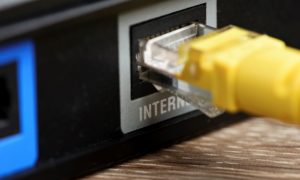
Choosing the right internet type for your business requires considering a number of factors, and you may find that a combination of different methods is best.
When configuring your IT set-up, and when planning the organization of your office more generally, one of the decisions you’ll repeatedly run up against is whether to go “wired” (with cables) or “wireless” (Wi-Fi).
Keep in mind that you don’t have to choose one at the complete expense of the other. Many businesses combine the two.
Wireless vs Cat-6: How Do They Compare?
Various factors will influence the extent to which you rely on a wireless set-up vs. the use of cables (Cat-6 is short for Category 6, a high-quality cable that provides notable improvements in performance compared to Cat5e, which is also frequently used).
The devices and applications you regularly depend on will play an important role in these decisions. Let’s look at how wireless generally compares to Cat-6 cables across different dimensions.
Convenience
Setting up Wi-Fi in your work environment gives your employees, business partners, and customers greater convenience when they use laptops, Smartphones, or tablets on your premises. Although businesses have legitimate concerns about a Bring Your Own Device (BYOD) approach, it has become fairly common, often contributing to productivity and giving employees greater flexibility for how to get their work done.
This, however, doesn’t mean that cables no longer have a purpose. Cables remain a strong option for desktop computers and other devices that remain at one location. And while they’re often not as convenient as Wi-Fi, they offer other benefits.
Security
Although Ethernet cables aren’t entirely free of security risks (for example, cyber criminals can try to tap into a cable), they transmit data more securely than wireless signals. With Wi-Fi, data gets transmitted in the form of radio waves between a computing device and a router; if the Wi-Fi remains open, anyone can intercept the data and listen in, even without any physical connection to your network.
However, there are a number of ways to improve Wi-Fi security. For example, businesses can use high standards of encryption and lengthy, complex passwords to better protect their Wi-Fi transmissions. Even if cables enjoy an edge in cyber security, you don’t have to give up on Wi-Fi.
Speed and Latency
Cables have the capability to transmit data faster and with less latency or delay than Wi-Fi networks. For many day-to-day business activities, these differences between cables and Wi-Fi aren’t relevant or noticeable to end-users. You may, however, perceive differences under some circumstances – such as when you need to transmit large amounts of data, including huge files. With some applications, you’ll favor the greater speed and reliability of a Cat6 cable.
Interference
Wi-Fi signals are more vulnerable to interference. Distance from the router, the activities from multiple devices, the presence of other Wi-Fi networks, and barriers such as walls can all interfere with Wi-Fi signals and degrade them.
Cables are also vulnerable to signal degradation. But assuming you’ve installed them correctly and are performing the necessary maintenance, they’re significantly less prone to interference and offer overall greater stability than Wi-Fi. (One of the qualities of Cat6 cables in particular are their ability to minimize cross-talk.)
Office layout
Fewer cables means it’s easier to set up your office and arrange your devices. You won’t have to worry as much about where to install all the cables, and where they’ll run along (or within) the floor, walls, or ceilings to different devices. There’s less clutter and more flexibility in layout. For example, if you’re using a printer with a wireless connection, you don’t have to link it physically to the computing device you’re printing a file from. You can position the printer all the way across the room if that works better for your layout.
Chances are, your company will rely on some combination of wired and wireless communications. The specifics of the arrangements will depend on your business needs (now and in the future), and the devices you’re working with. Don’t hesitate to contact us for assistance in figuring out the best ways to set-up your Wi-Fi and cable installations.